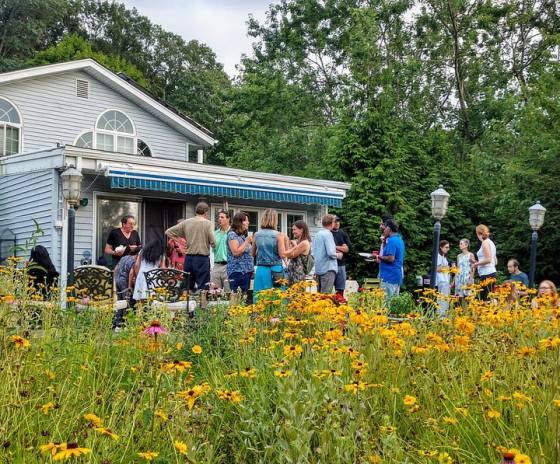Most Americans see lawns as a human right. The liberty to run freely through vast, green spaces might as well be written in the Constitution. Since the English gentry of the 17th and 18th centuries, manicured lawns have been adopted by the United States. And though this has become a staple of American culture, it is time for the practice to end. After all, there is a reason why drought-prone nations have not been able to fully adopt lawns: they are too high-maintenance, and their effects on the environment can be detrimental.
However, the United States is becoming a drought-prone nation itself, and we can no longer continue splurging on our polished, green fields.
Lawns have taken 30-40 million acres of land in the US. Homeowners typically use 10 times the amount of pesticide and fertilizers per acre on their lawns than farmers do on their crops.
The problem with fertilizers and pesticides
Chemical fertilizers and pesticides are easy to use and can quickly give a lawn a perfect, green look. But beneath the surface, soil is often overstimulated by these chemicals and can become depleted of necessary bacteria and microbes. Synthetic fertilizers often have excess nitrogen- soil microbes turn this excess nitrogen into nitrous oxide gas, a greenhouse gas with 300 times the heat-trapping ability of carbon dioxide. Excess nitrogen can also run off into bodies of water. The EPA estimates that 40-60% of nitrogen from lawns ends up in surface or ground water.
Runoff

As rain runs over lawns, streets, parking lots, and other surfaces, it picks up pesticides, fertilizers, oil, bacteria, and other contaminants. Much of this water is not absorbed by the ground and ends up flushing into local creeks, rivers, and other waterways. In fact, the use of lawn chemicals accounts for the majority of wildlife poisonings reported to the EPA. The dead zone of the Gulf of Mexico is a notorious example of runoff leading to algal blooms, oxygen depletion, and therefore the annihilation of aquatic life. 80% of pollution to marine ecosystems comes from land, a large portion of which comes from nonpoint sources (runoff). Although lawns cannot be the sole contributor to land-based ocean pollution, lawns can create significant problems in local waterways.
Runoff can pour into drinking water sources, making water treatment more labor intensive and expensive. Environmental organizations such as the Chesapeake Bay Foundation recommend “rain gardens” in all green spaces to serve as natural drains for runoff.
This goes against everything a traditional lawn stands for. So, how can lawns be made environmentally friendly?
Solutions
The best lawn is one that fits with its surrounding environment. Rather than a man-made, flat patch of grass, lawns should include rain gardens with native species. Native plants are adapted to their climate and rainfall levels, and can thrive without the need for human intervention. With the natural ability to defend against pests, these plants also eliminate the need for fertilizers or pesticides, improving soil health and decreasing chances of erosion and dangerous runoff. Native species support local ecosystems, food chains, water supply, and can save you time and money!
Use Native Plants Finder to discover native species in your area.
Planting rain gardens is also a solution to flood-prone areas. Rain gardens are usually defined as a crater of mulch and native species set on a low-ground area, designed to soak rainwater as it flows downward.

Though clear, open lawns are a staple in American suburbia, notions against the classic lawn are becoming popular on social media.
Lawns and green spaces have immense potential to benefit our environment, and there are many methods to make our lawns eco-friendly.




I knew about the damage pesticides caused, but had no idea of the extent. I love the solution offered. Here is a case for less Green.